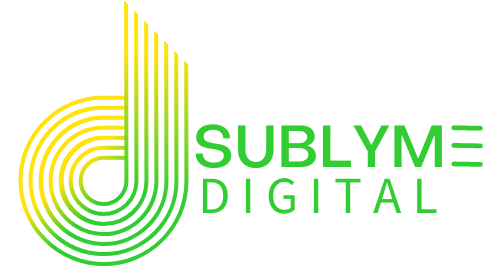Top Strategies to Scale High-Performing AdWords Campaigns
Key Takeaways
- High-performing campaigns are the foundation of a successful AdWords scaling strategy.
- Metrics like ROAS, CTR, and CPA are critical for identifying top-performing campaigns.
- Audience segmentation and keyword analysis reveal hidden opportunities for growth.
- A/B testing and prioritizing campaign types ensure your budget is allocated effectively.
- Learn more about scaling strategies in our budget allocation guide.
Why Identifying High-Performing Campaigns is Crucial for Scaling
Scaling your AdWords campaigns isn’t about increasing your budget across the board—it’s about strategically amplifying what works. High-performing campaigns provide the clearest path to sustainable growth, enabling you to allocate your resources effectively and maximize ROI.
But how do you identify these campaigns? What metrics, tools, and strategies should you use to ensure your scaling efforts are data-driven and effective?
In this blog, we’ll explore 5 essential strategies for identifying high-performing campaigns and show you how to use these insights to scale your AdWords strategy. For an in-depth look at scaling strategies, check out our budget allocation guide.
1. Track Key Metrics to Measure Success
Why It Matters:
Metrics are the backbone of campaign performance analysis. Without tracking the right metrics, you risk scaling campaigns that don’t deliver results and wasting valuable budget.
Key Metrics to Track:
- Return on Ad Spend (ROAS): This measures the revenue generated for every dollar spent. A high ROAS indicates a campaign is effectively converting spend into profit.
- Cost-Per-Acquisition (CPA): This tracks how much it costs to acquire a single customer. Campaigns with a low CPA are typically more efficient and scalable.
- Click-Through Rate (CTR): CTR reveals how engaging your ads are to users, providing insights into ad copy effectiveness.
- Conversion Rate: This measures the percentage of users who complete a desired action, such as making a purchase or signing up for a newsletter.
How to Use These Metrics:
- Regularly review Google Analytics and AdWords reports to track these metrics.
- Set benchmarks to identify campaigns consistently outperforming others.
- Compare metrics across campaigns to determine which ones are worth scaling.
Pro Tip:
Create custom dashboards in Google Analytics to track key metrics in real-time, making it easier to spot trends and opportunities.
Real-World Example:
An eCommerce store identified a campaign with a 400% ROAS and reallocated 50% of its budget to scale it, resulting in a 60% increase in monthly revenue.
2. Leverage Audience Segmentation for Targeting
Why It Matters:
Not all audiences respond the same way to your ads. By segmenting your audience, you can identify which groups drive the most value and tailor your campaigns to maximize engagement.
Key Strategies:
- Demographic Segmentation: Analyze performance by age, gender, and income level to understand which demographics convert best.
- Remarketing Lists: Target users who have interacted with your brand but haven’t converted yet.
- In-Market Audiences: Reach users actively searching for products or services similar to yours.
- Affinity Audiences: Target users with interests that align with your brand.
How to Apply This Strategy:
- Use Google Ads audience insights to identify high-performing segments.
- Create separate campaigns for each audience segment to tailor messaging and offers.
- Allocate more budget to segments with the highest conversion rates and lowest CPA.
Pro Tip:
Combine audience segmentation with dynamic ad copy to create personalized experiences that resonate with users and drive higher engagement.
Real-World Example:
A SaaS company segmented its audience by purchase intent and created a campaign targeting trial users, leading to a 70% increase in paid subscriptions within three months.
Scaling isn’t about spending more—it’s about spending smarter by focusing on what data has proven works.
3. Analyze Keyword Performance
Why It Matters:
Keywords are the foundation of your AdWords campaigns. High-performing keywords indicate where your budget delivers the best ROI, while underperforming ones can drain resources.
Key Strategies:
- Search Terms Report: Use this report to identify keywords with high CTR and conversion rates.
- Long-Tail Keywords: Focus on keywords with lower competition and higher intent to capture niche audiences.
- Quality Score Analysis: Monitor Quality Scores to ensure your keywords align with user intent and improve ad relevance.
- Negative Keywords: Regularly update your negative keyword list to filter out irrelevant traffic.
How to Apply This Strategy:
- Pause low-performing keywords to reallocate your budget to high-performing ones.
- Test new keyword variations to find additional opportunities for growth.
- Use bid adjustments to prioritize top-performing keywords.
Pro Tip:
Implement single keyword ad groups (SKAGs) to maximize control over ad copy and bidding for your top-performing keywords.
Real-World Example:
A fitness brand discovered that long-tail keywords like “best yoga mats for beginners” had a 30% higher conversion rate than broader terms, leading to a more focused and profitable campaign strategy.
4. Prioritize Campaign Types That Deliver Results
Why It Matters:
Different campaign types serve different purposes. Identifying which types deliver the best results allows you to allocate your budget more effectively.
Key Campaign Types:
- Search Campaigns: Ideal for high-intent users actively searching for your product or service.
- Shopping Campaigns: Perfect for eCommerce businesses showcasing their product catalog.
- Display Campaigns: Great for building brand awareness and retargeting.
- Video Campaigns: Effective for storytelling and engaging users visually.
How to Apply This Strategy:
- Use historical performance data to determine which campaign types align best with your goals.
- Allocate more budget to campaign types with the highest ROAS and CTR.
- Experiment with different campaign types to identify new opportunities for growth.
Pro Tip:
Combine Search and Display campaigns for a full-funnel approach that drives both awareness and conversions.
Real-World Example:
A clothing retailer found that Shopping Campaigns had a 50% higher ROAS than Display Campaigns and shifted its budget accordingly, resulting in a 40% increase in sales.
5. Use A/B Testing to Optimize Campaigns
Why It Matters:
A/B testing allows you to experiment with different elements of your campaigns to determine what resonates best with your audience. This ensures your scaling efforts are data-driven and effective.
What to Test:
- Ad Copy: Experiment with headlines, descriptions, and CTAs.
- Landing Pages: Test different layouts, images, and messaging.
- Bidding Strategies: Compare manual and automated bidding to find the most efficient approach.
- Campaign Settings: Test different targeting options, such as location and device preferences.
How to Apply This Strategy:
- Run A/B tests for at least two weeks to gather sufficient data.
- Analyze test results to identify winning variations.
- Scale successful elements across your campaigns.
Pro Tip:
Use Google Optimize to run landing page experiments and integrate results with your AdWords campaigns for seamless optimization.
Real-World Example:
An online retailer tested three variations of ad copy and found that emphasizing “free shipping” increased CTR by 25%, leading to a significant boost in overall conversions.
We Build Cool

Success Stories
365 Data Centers
Discover how we rapidly rebuilt and optimized a 30-page website for 365 Data Centers, restoring their online presence and managing digital ad campaigns across key regions to drive engagement and growth.
XTECH Football Pads
Discover how we transformed XTECH Football Pads‘ digital presence, boosting their online sales and tripling website traffic through innovative website development and user experience enhancements.
BeEarth Foundation
Discover how we partnered with the BeEarth Foundation to develop a website that aligns with their mission of sustainability and global engagement. Our work has significantly increased their online visibility and engagement, supporting their efforts to promote sustainable development.
We Recycle Solar
Learn how we illuminated digital success for We Recycle Solar by completely redesigning their website to reflect their leadership in the growing solar recycling industry and implementing strategic digital advertising campaigns that enhanced their visibility at key industry events.
Preferred Home Health Care & Nursing Services
Explore how we elevated the digital presence of Preferred Home Health Care & Nursing Services by enhancing their website for better lead generation, building a dedicated site for staff recognition, and optimizing SEO for their location pages.
What Our Clients Say: Elevating Online Success
Conclusion: Scale Smarter with Sublyme Digital
Scaling your AdWords campaigns starts with identifying what works. By focusing on key metrics, leveraging audience segmentation, and refining your keyword strategy, you can build a foundation for sustainable growth.
At Sublyme Digital, we specialize in helping businesses optimize their advertising strategies for maximum ROI. Whether you’re looking to refine your campaigns or allocate your budget more effectively, we have the expertise to guide you every step of the way.
For a deeper dive into scaling strategies, check out our budget allocation guide and discover how to take your AdWords campaigns to the next level. Let’s work together to achieve your growth goals!
FAQs
Answer: Track metrics like ROAS, CTR, CPA, and conversion rates to pinpoint campaigns delivering the best results.
Answer: Yes! Segmenting your audience helps you identify which groups drive the most value and tailor your campaigns effectively.
Answer: A/B testing allows you to experiment with different elements of your campaigns, helping you identify what works best before scaling.
Answer: Analyze your Search Terms Report, focus on high-performing keywords, and pause low-performing ones to reallocate your budget effectively.
Answer: Absolutely! Our tailored strategies and resources ensure you maximize your advertising ROI. Learn more in our budget allocation guide.
Let's Build Something Sublyme
Ready to scale your AdWords campaigns? Contact Sublyme Digital today for a free consultation and let’s build your digital success together!



